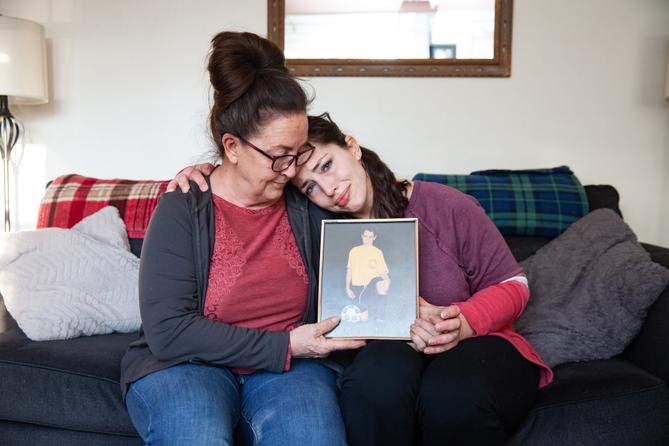Spotlight PA is an independent, non-partisan newsroom powered by The Philadelphia Inquirer in partnership with PennLive/The Patriot-News, TribLIVE/Pittsburgh Tribune-Review, and WITF Public Media. Sign up for our free newsletters.
Pennsylvania is at the epicenter of the nation’s opioid crisis, ranking among the top five states for overdose death rates and top 10 for number of adults suffering from substance use disorder in recent years, according to national data. And the addiction treatment industry here is growing.
Federal grants, state initiatives, and Medicaid pump millions of taxpayer dollars into the field annually. The state has seen a net gain of about 40 licensed treatment facilities over the past four years, bringing the total to more than 800.
But an investigation by Spotlight PA and KHN found the Pennsylvania Department of Drug and Alcohol Programs — which licenses these facilities — provides weak oversight and lacks the resources and regulatory power to police them, allowing providers to continue operating despite repeated violations and harm to clients. The department has no standard criteria to determine when it should force facilities to serve fewer patients and, in nearly a decade, has revoked just one provider’s license.
Spotlight PA began investigating the state’s oversight of addiction treatment facilities shortly after its launch in late 2019. The newsroom later partnered with KHN, a national organization that produces in-depth journalism about health issues.
Our team began by scraping thousands of facility inspection reports from the Department of Drug and Alcohol Programs’ website. We then analyzed them to find the most egregious citations: ones that mentioned a failure to report patient deaths and assault, that noted medication errors, or that revealed unsafe staffing ratios.
We also requested from the department historical data about which facilities had received provisional licenses — designations indicating that facilities have failed to meet several state requirements and will be inspected more frequently until they resolve those concerns. The department didn’t have an automated system to gather this data but agreed to compile it manually. It provided the information with the following caveat: “Due to incorrect data entered into the licensing database, the attached report may not include all provisional licenses since 2012. It is as close to accurate as we can determine base[d] on the available data.”
Additionally, the team filed an open records request for reports of unusual incidents. These are certain serious events that the department requires facilities to report, including client deaths and incidents of physical and sexual abuse, among others. The department provided reports of only those incidents that it decided did not warrant investigation. It said it could not provide the total number of such events because it doesn’t have facility-specific aggregate data prior to September 2019, when it launched a new electronic reporting system. Even available data from that new system provides an incomplete picture, as less than a quarter of treatment facilities had enrolled in the voluntary system as of March 2021.
Reporters also reviewed the department’s administrative court history to see cases in which the state had initiated legal action against a facility.
To further inform our reporting, we launched a public callout for readers to send in tips and concerns about facilities.
Using a combination of these sources — facility inspection surveys, provisional license history, administrative court cases, limited reports of unusual incidents, and tips from the public — we compiled a list of 34 facilities that appeared to have the most troubling track records.
From the short list of facilities, Spotlight PA and KHN reporters then reached out to current and former employees and clients at various locations. The interviews helped establish whether people’s firsthand experiences matched the concerns that arose in the data.
Our reporters also reviewed the licensing applications that these facilities had submitted to the state, as well as lawsuits filed by clients and employees against the facilities. We interviewed former employees of the Department of Drug and Alcohol Programs to understand the oversight system and challenges within the agency.
The final story was based on interviews with more than 80 people and a review of thousands of pages of state government and court records.
WHILE YOU’RE HERE… If you learned something from this story, pay it forward and become a member of Spotlight PA so someone else can in the future at spotlightpa.org/donate. Spotlight PA is funded by foundations and readers like you who are committed to accountability journalism that gets results.

